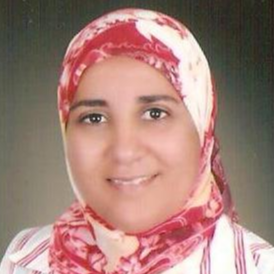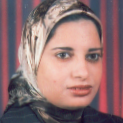International Journal of Intelligent Systems and Applications (IJISA)
IJISA Vol. 10, No. 8, 8 Aug. 2018
Cover page and Table of Contents: PDF (size: 751KB)
A Multi-level Parallel System for Laws Masks Abnormality Lung Detection
Full Text (PDF, 751KB), PP.54-67
Views: 0 Downloads: 0
Author(s)
Index Terms
Lung cancer, Pulmonary Edema, Laws Texture Feature, Texture analysis, parallel processing
Abstract
Lung is a vital organ that plays a pivotal role in every second of our lives. Lungs may be affected by a number of diseases, including pulmonary edema and cancer. These diseases deemed life-sustained diseases, so they possess high preferences in detection, diagnosis, and possible treatments. In this paper, we presented a textural feature analysis framework that is capable of detecting lung abnormalities (edema or cancer) using Laws masks texture features. Laws masks are conventional texture feature extractor, and considered as one of the best methods for texture analysis in image processing. However, computing and extracting the texture features through various masks are very time consuming, whereas lung diseases demand rapid yet accurate diagnosis. Today, increased efficiency is being achieved through parallelism, and this trend is believed to continue in the future, with all computing devices likely to have many processors. Therefore, our objective is to investigate a multi-level parallel algorithm on Laws masks to describe structural variations of lung abnormalities. To our knowledge, there are no published researches that employed parallel strategies for lung abnormalities detection using Laws method. The proposed system has been experimented on real CT lung images. The results indicate that Laws texture features are capable of discriminating among normal, edema and cancerous lungs. Furthermore, applying parallel processing approaches improves significantly the overall system performance.
Cite This Paper
Heba A. Elnemr, Ghada F. ElKabbany, "A Multi-level Parallel System for Laws Masks Abnormality Lung Detection", International Journal of Intelligent Systems and Applications(IJISA), Vol.10, No.8, pp.54-67, 2018. DOI:10.5815/ijisa.2018.08.05
Reference
[1]A. Materka and M. Strzelecki, “Texture analysis methods: a review,” Technical Univ. of Lodz, Institute of Electronics, COST B11 report, Brussels, 1998.
[2]H. Elnemr, N. Zayed and M. Fakhreldein, “Feature extraction techniques: fundamental concepts and survey,” Handbook of Research on Emerging Perspectives in Intelligent Pattern Recognition, Analysis, and Image Processing, 2015.
[3]U. Paul, P. Banerjee, A. Mukherjee and S. Bandhyopadhyay, “Technologies in texture analysis: a review,” British Journal of Applied Science & Technology, vol. 13, pp. 1-21, 2016.
[4]A. Ahmad and M. R. Daliri, “A review on texture analysis methods in biomedical image processing,” OMICS Journal of Radiology, vol. 5, pp. e136, April 2016. doi:10.4172/2167-7964.1000e136
[5]R. Lakshmi, E. Reddy and K. Sekharaiah, “Texture Analysis Based on Micro Primitive Descriptor (MPD),” I. J. Modern Education and Computer Science, vol. 2, pp. 32-41, February 2015. doi: 10.5815/ijmecs.2015.02.05
[6]M. Soumya, K. Sneha and C. Arunvinodh, “Cervical cancer detection and classification using texture analysis,” Biomedical & Pharmacology J., vol. 9, pp. 663-671, 2016.
[7]N. Sharma, A. K. Ray, S. Sharma, K. K. Shukla, S. Pradhan and L. M. Aggarwal, “Segmentation and classification of medical images using texture-primitive features: Application of BAM-type artificial neural network,” J Med Phys, vol. 33, pp. 119-126, July 2008. doi: 10.4103/0971-6203.42763.
[8]A. Ahmad and P. Kabiri, “Multispectral MRI image segmentation using Markov random field model,” Signal, Image and Video Processing, vol. 10, pp. 251-258, February 2016.
[9]S. Giraddi, J. Pujari and S. Seeri, “Role of GLCM Features in Identifying Abnormalities in the Retinal Images,” I. J. Image, Graphics and Signal Processing, vol. 6, pp. 45-51, May 2015. doi: 10.5815/ijigsp.2015.06.06.
[10]N. Zayed and H. Elnemr, “Statistical analysis of haralick texture features to discriminate lung abnormalities,” Int. J. of Biomedical Imaging, vol. 2015, pp. 1-7, September 2015.
[11]A. Ben Taieb, M. S. Nosrati, H. Li-Chang, D. Huntsman and G. Hamarneh, “Clinically-inspired automatic classification of ovarian carcinoma subtypes,” J. Pathol Inform, vol. 7, pp. 28, September 2016.
[12]A. Ahmad and M. R. Daliri, “Rotation invariant texture classification using extended wavelet channel combining and LL channel filter bank,” Knowl.-Based Syst., vol. 97, pp. 75–88, April 2016.
[13]Z. Zou, J. Yang, V. Megalooikonomou, R. Jennane, E. Cheng and H. Ling, “Trabecular bone texture classification using wavelet leaders,” In Proc. SPIE 9788, Medical Imaging 2016: Biomedical Applications in Molecular, Structural, and Functional Imaging, 97880E, 29 March, 2016. doi: 10.1117/12.2216452
[14]S. Saxena, S. Sharma and N. Sharma, “Parallel image processing techniques, benefits and limitations,” Research Journal of Applied Sciences, Engineering and Technology, vol. 12, pp. 223-238, January 2016.
[15]M. Emmanuel, D. R. Ramesh-Babu, J. Jagdale, P. Game and G. P. Potdar, “Parallel approach for content based medical image retrieval system,” Journal of. Computer Science, vol. 6, pp. 1258-1262, 2010. doi: 10.3844/jcssp.2010.1258.1262
[16]A. Reményi, S. Szénási, I. Bándi, Z. Vámossy, G. Valcz, P. Bogdanov, S. Sergyán and M. Kozlovszky, “Parallel biomedical image processing with GPUs in cancer research,” In Proc. 3rd IEEE Int. Symp. on Logistics and Industrial Informatics, Budapest, p. 245-248, August 2011.
[17]H. Elnemr, “Statistical analysis of laws mask texture features for cancer and water lung detection,” Int. J. of Comput. Sci. Issues, vol. 10, pp. 196-202, November 2013.
[18]W. Sun, X. Huang, T. Tseng, J. Zhang and W. Qian, “Computerized lung cancer malignancy level analysis using 3D texture features,” SPIE 9785, Medical Imaging 2016: Computer-Aided Diagnosis, March 2016.
[19]J. Yao, A. Dwyer, R. M. Summers, and D. J. Mollura, “Computer-aided diagnosis of pulmonary infections using texture analysis and support vector machine classification,” Academic Radiology, vol. 18, pp. 306–314, March 2011. doi: 10.1016/j.acra.2010.11.013.
[20]S. Kulkarni and R. Shelke, “Multiresolution analysis for medical image segmentation using wavelet transform,” Int. J. of Emerging Technology and Advanced Engineering, vol. 4, pp. 543-545, June 2014.
[21]LD. Wang, XY. Tai and TE. Ba, “Medical image retrieval based on wavelet transform texture analysis,” Chinese Journal of Medical Instrumentation, vol. 30, pp. 102-105, March 2006.
[22]A. Depeursinge, D. Sage, A. Hidkin, A. Platon, et al., “Lung tissue classification using wavelet frames,” In Proc. 29th Annual Int. Conf. of IEEE, Eng. in Medicine and Biology Society, EMBS, France, August 2007.
[23]A. Alivar, H. Danyali and M. Helfroush, “Hierarchical classification of normal, fatty and heterogeneous liver diseases from ultrasound images using serial and parallel feature fusion,” Biocybernetics and Biomedical Engineering, vol. 36, pp. 697-707, 2016.
[24]T. E-Mursalin, “Parallel image processing for high content screening data,” Master Thesis, Mcmaster Univ., Biomedical Engineering, January 2013.
[25]V. Kumar, A. Grama, A. Gupta and G. Karypis, “Introduction to parallel computing: design and analysis of algorithms,” Benjamin-Cummings Publishing Co., 2nd ed., ACM Press, 2003.
[26]B. Barney, “Introduction to parallel computing,” Retrieved from Lawsrence Livermore National Laboratory, https://computing.llnl.gov/tutorials/parallel_comp/, 2010.
[27]T. Bräunl, S. Feyrer, W. Rapf and M. Reinhardt,"Parallel Image Processing," Springer-Verlag Berlin Heidelberg, 2001.
[28]N. Hamilton, R. Pantelic, K. Hanson and R. Teasdale, “Fast automated cell phenotype image classification,” BMC bioinformatics, vol. 8, March 2007.
[29]J. You and P. Bhattacharya, “A wavelet-based coarse-to-fine image matching scheme in a parallel virtual machine environment,” IEEE Trans. on Image Processing, vol. 9, pp. 1547-1559, September 2000.
[30]B. Woods, B. Clymer, J. Saltz and T. Kurc, “A parallel implementation of 4-dimensional haralick texture analysis for disk-resident image datasets,” In Proc. ACM/IEEE Supercomputing Conf., USA, p. 48-48, November 2004.
[31]K. Sidiropoulos, S. Kostopoulos, D. Glotsos, E. Athanasiadis, et al., “Multimodality GPU-based computer-assisted diagnosis of breast cancer using ultrasound and digital mammography images,”. Int. J. Comput. Assisted Radiology and Surgery, vol. 8, pp. 547–560, July 2013.
[32]G. Zolynski, T. Braun and K. Berns, “Local binary pattern based texture analysis in real time using a graphics processing unit,” In Proc. Robotik 2008, vol. 2012, p. 321–325, June 2008.
[33]J. Leibstein, A. Findt and A. Nel, “Texture classification using local binary patterns on modern graphics hardware,” In Proc. SATNAC, Spier Estates, Cape Town, 2010.
[34]J. Leibstein, A. Findt and A. Nel, “Efficient texture classification using local binary patterns on a graphics processing unit,” In Proc. 21st annual Symp. of the Pattern Recognition Association of South Africa, p.147–152, 2010.
[35]M. Rachidi, A. Marchadier, C. Gadois, E. Lespessailles, et al., “Laws masks descriptors applied to bone texture analysis: an innovative and discriminate tool in osteoporosis,” Skeletal Radiology, vol. 37, pp. 541–548, June 2008.
[36]H. Seng, T. Swee and Y. Chai, “Research on laws mask texture analysis system reliability,” Research J. of Applied Sciences, Engineering and Technology, vol. 7, pp. 4002-4007, May 2014.
[37]K. Hwang, G. Fox and J. Dongarra, “Chapter 1: System Models and Enabling Technologies,” Distributed computing: clusters, grids and clouds, Morgan Kaufmann, Elsevier, Inc., May 2010.
[38]M. Anjomshoa, M. Salleh and M. Kermani, “A taxonomy and survey of distributed computing systems,” J. Applied Sciences, vol. 15, pp. 46-57, 2015. doi: 10.3923/jas.2015.46.57
[39]S. Makka and B. Sagar, “Performance analysis of a system that identifies the parallel modules through program dependence graph,” I. J. Intelligent Systems and Applications, vol. 9, pp. 37-45, September 2017. doi: 10.5815/ijisa.2017.09.05

